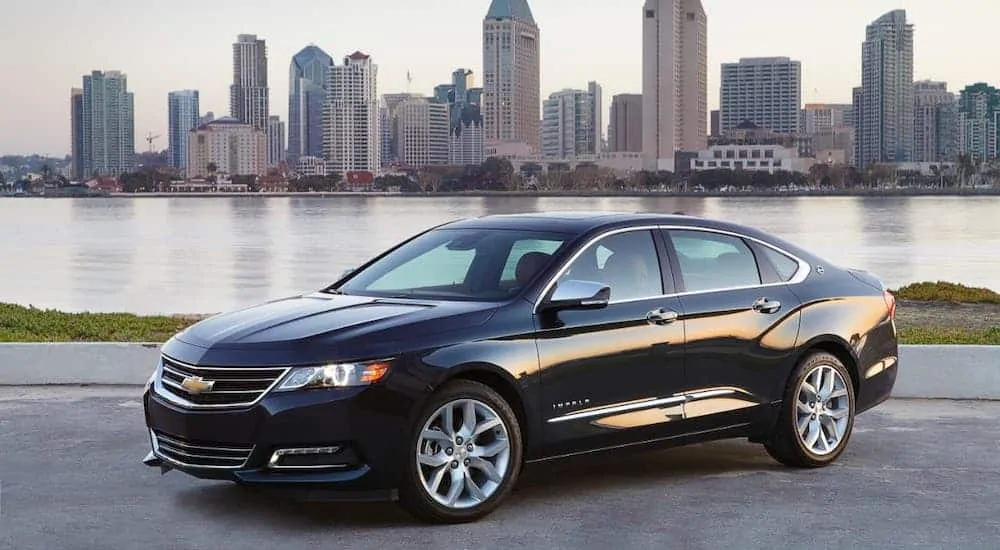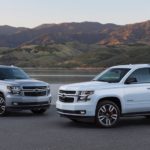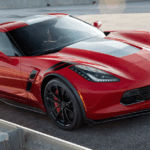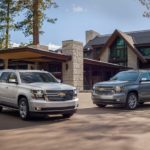In 2018, Chevrolet shocked the world when it announced that the manufacturer would cease production on the Impala sedan after the 2020 model year. To many, it seemed that the Impala, which began production in 1957, would be an eternal fixture in the automotive industry, to survive the end of humanity as we know it, along with cockroaches and water bears. Alas, the fickle finger of fate––or in this case, automotive trends- has dealt the Impala a harsh blow, and after being outperformed by its larger brand-mates, it becomes another Chevy sedan on the graveyard that is the “Discontinued Vehicles” page while Chevy SUV models thrived.
Many experts in the automotive industry wonder how we got here. When did the trend shift so mightily from the cozy family sedan to the big and bulky SUVs and trucks that now rule the roads? Chevy was once the baron of the car industry, with a few trucks and station wagons sprinkled into the mix for those with more work and more stuff than the average sedan could handle. Today, there are only three cars on the Chevy roster, though if we count the Corvette and Camaro, that becomes five. Comparatively, there are seven SUVs, making it abundantly clear that Chevy is betting on the flexible, reliable, and highly capable SUV as the vehicle of the future. How they came to that conclusion is a combination of good business, fantastic marketing, and a solid eye to the future.
Making Cars That Make Money

With headquarters in Detroit, MI, Chevrolet has been the All-American Auto Manufacturer since the brand’s humble beginnings in 1911. Today, the brand is estimated to be worth approximately $10.7 billion, with sales totaling around $80.6 billion. Clearly, they are doing something right to earn that many zeros.
Chevy automobiles are sold in over 130 countries around the world. The brand makes up over half of the global volume of the General Motors umbrella of vehicle manufacturers. Therefore, it’s easy to declare that Chevrolet’s numbers represent a significant amount of vehicle purchases each year. So when the brand’s profitability fell 2.4% in 2018, after a 1.5% drop in 2017, it was easy to see something was afoot. A quick peek at sales figures told the tale of the trend, with the Equinox line up in sales by 15%, and erstwhile favorites Impala and Malibu dropping in sales by over 20% each.
The writing has been on the wall for some time now. It just happens that the very same brand responsible for introducing America to the modern SUV was among the last national brands to fully acknowledge the shift in appetite.
Creating the Ideal Market
The Suburban Carryall hit the US market in 1935. Much like its contemporary, the Chevy Suburban, it was a large, multi-functional vehicle that could “carry” just about anything. From an unheard-of eight total passengers to more enclosed cargo room than any vehicle of its time, the first Suburbans were an instant hit. In fact, they were so much a hit that the “Suburban” has become the longest-running nameplate in American automotive history.
The term “SUV” appeared in the late 1980s, over a decade after the Suburban had been given four doors and a tailgate. Americans had seen it all by the 80s: boat-sized sedans with giant tails, tiny coupes that zipped through the city streets, rambling trucks, off-roading wonder cars, and station wagons that could sleep a whole family. Somewhere amidst the family minivan craze of the late 1980s, the SUV stepped in with an equally wholesome, yet somehow “cooler” solution to moving great quantities of people and stuff across town and across the country.
Through all of these shifts in the American paradigm, Chevy kept up with the trends. The Belair, the Biscayne, the Corvair, Chevelle, Chevette, the Nova, and the Citation are just a few of the ghosts lingering around the Detroit production plants. As the American appetite warmed up, Chevy had a vehicle in place for it. This is, after all, the manufacturer who took the most popular parts of a muscle car, a station wagon, and a pickup truck, mashed them together, and created the classic icon known as the “El Camino.” When the need for a vehicle waned, Chevy was already back at the drawing board with exactly the right vehicle for the next big craving.
Focus on the Future
Dan Neil, an automotive columnist for the Wall Street Journal, was quoted on Marketplace.org’s popular consumer website with his insight on this matter. “You know, carmakers always say they build what people want. But they never mention the fact that they spend billions to tell them what they want.”
In truth, Chevrolet has done a wonderful job of helping the American public decide what they need, though the process was hardly nefarious and built upon existing trends and economic intelligence.
In 2008 and 2009, Americans were in the midst of a panic-inducing recession. Gas prices were astronomical. Public transit in most American cities was impractical and insufficient. Just as they did in the 1970s, when a gasoline shortage plagued the planet, people flocked to smaller cars. Nearly every automaker, Chevrolet included, brought an electric, hybrid, or otherwise environmentally-sound vehicle to the table, and the segment took off… only to slowly trickle off as the economy stabilized.
While hardly anyone would say that the economy of 2019-2020 has been fantastic, SUVs and pickup trucks command 70% of the automobile market. From January to June 2019, SUVs and trucks logged 5.9 million sales, while the midsize sedan segment came in under 2 million sales. Those figures create a pretty bold and final statement about the overall appetite for cars versus SUVs.
Part of that is economical. The SUV boom of the 1990s began with a loophole in the federal Corporate Average Fuel Economy rules regarding the mile-per-gallon regulations for trucks versus cars. Considering the average SUV sells for over $40,000, while the average sedan sells for around $25,000, the chips are very clearly stacked on profit margins.
The final blow to the sedan came with a decision made by the Trump administration. While the Obama administration worked to leverage the health of the planet with fuel usage with goals to increase the average fuel economy of new vehicles to 51.4 miles per gallon by 2025, the automotive industry as a whole was successful in getting the EPA fuel economy standards frozen at just 37 miles per gallon.
For their part, Chevrolet and other auto manufacturers have demonstrated respect for the need to clean up the planet while making a profit. While the SUVs of the 1990s rarely allowed more than 15-17 miles per gallon combined, the current generations feature the spawn of those electric and hybrid engineering concepts from 2008 to bring fuel economy up to more reasonable levels, such as the 2020 Chevy Equinox, which can handle 26 miles per gallon city and 31 miles per gallon highway.
In fact, Chevrolet should be fully commended for being able to control all of the balls in the air when it comes to the American appetite for vehicles. As Mr. Neil notes, marketing is a huge part of the trends the country follows, but there’s far more to the capitalist initiative than glossy advertisements.
For example, Americans have indicated they want vehicles that are safe for their families. Following a high number of SUV rollovers and recalls in the 1990s, the public voted with their dollars and stopped buying SUVs. The automotive industry responded by re-engineering the vehicles to have a greater central balance and included a variety of stability technology to rectify the issue. Today, Chevy gives all of its SUVs a rearview camera, anti-lock brakes, and a full suite of cameras, sensors, and automatic features that are designed to keep drivers, pedestrians, and other vehicles on the road as safe as possible.
Not every vehicle can be like the Impala or Suburban. While Chevrolet has seen incredible lifespans on vehicles such as the Cavalier (1981-2005), the Caprice (1965-1996), the Monte Carlo (1969-2007), and more, the poet Robert Frost may have captured it best when he penned, “Nothing gold can stay.” Appetites change. Economies slide up and down. Auto manufacturers, even titans like GM and Chevrolet, are not immune to these changes. While there may be fewer sedans on the road with the famous bowtie logo, they’ll be more than made up for by the presence of their larger and more versatile siblings. Are SUVs here to stay? Impossible to tell. But in the current Season of the SUV, things look promising.




